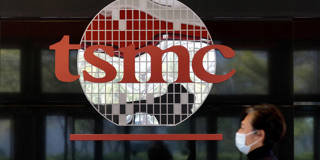With the outlook for Sino-American relations remaining grim, the globally indispensable Taiwan Semiconductor Manufacturing Company (TSMC) is quietly exploring its options. Stuck in the middle of the twenty-first century’s great-power contest, its future will depend on playing a smart long game.
CAMBRIDGE – Often referred to as the “Silicon Shield,” Taiwan produces a staggering 65% of the world’s semiconductors and over 90% of the highest-end chips. As such, no company is more singularly important to the global economy than TSMC (Taiwan Semiconductor Manufacturing Company). TSMC’s advanced microchips are indispensable to iPhones, medical devices, missile launch platforms, and many other technologies, and they are largely unrivaled. Countries and companies that cannot avail themselves of TSMC’s most advanced semiconductors simply cannot develop certain critical technologies. The company’s decisions thus can bear directly on matters of global security.

CAMBRIDGE – Often referred to as the “Silicon Shield,” Taiwan produces a staggering 65% of the world’s semiconductors and over 90% of the highest-end chips. As such, no company is more singularly important to the global economy than TSMC (Taiwan Semiconductor Manufacturing Company). TSMC’s advanced microchips are indispensable to iPhones, medical devices, missile launch platforms, and many other technologies, and they are largely unrivaled. Countries and companies that cannot avail themselves of TSMC’s most advanced semiconductors simply cannot develop certain critical technologies. The company’s decisions thus can bear directly on matters of global security.